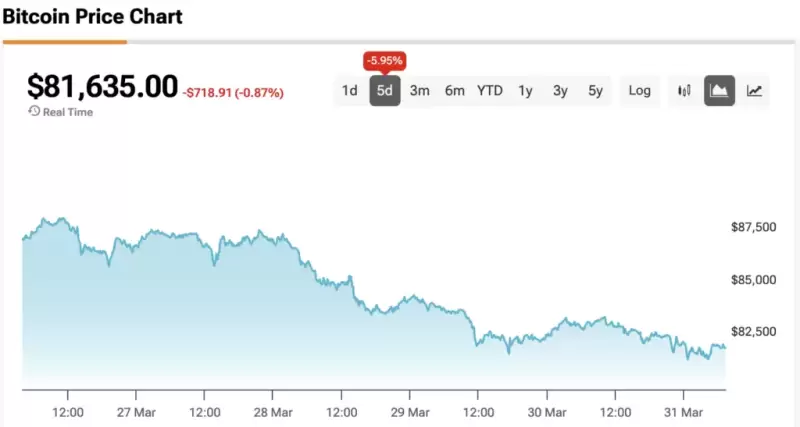 |
|
 |
|
 |
|
 |
|
 |
|
 |
|
 |
|
 |
|
 |
|
 |
|
 |
|
 |
|
 |
|
 |
|
 |
|
Cryptocurrency News Articles
Instant Purge: All Cloudflare customers can now purge any content type
Apr 01, 2025 at 10:00 pm
There's a tradition at Cloudflare of launching real products on April 1, instead of the usual joke product announcements circulating online today.

There's a tradition at Cloudflare of launching real products on April 1, instead of the usual joke product announcements circulating online today. In previous years, we've introduced impactful products like 1.1.1.1 and 1.1.1.1 for Families. Today, we're excited to continue this tradition by making every purge method available to all customers, regardless of plan type.
During Birthday Week 2024, we announced our intention to bring the full suite of purge methods - including purge by URL, purge by hostname, purge by tag, purge by prefix, and purge everything - to all Cloudflare plans. Historically, methods other than "purge by URL" and "purge everything" were exclusive to Enterprise customers. However, we've been openly rebuilding our purge pipeline over the past few years (hopefully you've read some of our blog series), and we're thrilled to share the results more broadly. We've spent recent months ensuring the new Instant Purge pipeline performs consistently under 150 ms, even during increased load scenarios, making it ready for every customer.
But that's not all - we're also significantly raising the default purge rate limits for Enterprise customers, allowing even greater purge throughput thanks to the efficiency of our newly developed Instant Purge system.
Building a better purge: a two-year journey
Stepping back, today's announcement represents roughly two years of focused engineering. Near the end of 2022, our team went heads down rebuilding Cloudflare's purge pipeline with a clear yet challenging goal: dramatically increase our throughput while maintaining near-instant invalidation across our global network.
Cloudflare operates data centers in over 335 cities worldwide. Popular cached assets can reside across all of our data centers, meaning each purge request must quickly propagate to every location caching that content. Upon receiving a purge command, each data center must efficiently locate and invalidate cached content, preventing stale responses from being served. The amount of content that must be invalidated can vary drastically, from a single file, to all cached assets associated with a particular hostname. After the content has been purged, any subsequent requests will trigger retrieval of a fresh copy from the origin server, which will be stored in Cloudflare's cache during the response.
Ensuring consistent, rapid propagation of purge requests across a vast network introduces substantial technical challenges, especially when accounting for occasional data center outages, maintenance, or network interruptions. Maintaining consistency under these conditions requires robust distributed systems engineering.
How did we scale purge?
We've previously discussed how our new Instant Purge system was architected to achieve sub-150 ms purge times. It's worth noting that the performance improvements were only part of what our new architecture achieved, as it also helped us solve significant scaling challenges around storage and throughput that allowed us to bring Instant Purge to all users.
Initially, our purge system scaled well, but with rapid customer growth, the storage consumption from millions of daily purge keys that needed to be stored reduced available caching space. Early attempts to manage this storage and throughput demand involved queues and batching for smoothing traffic spikes, but this introduced latency and underscored the tight coupling between increased usage and rising storage costs.
We needed to revisit our thinking on how to better store purge keys and when to remove purged content so we could reclaim space. Historically, when a customer would purge by tag, prefix or hostname, Cloudflare would mark the content as expired and allow it to be evicted later. This is known as lazy-purge because nothing is actively removed from disk. Lazy-purge is fast, but not necessarily efficient, because it consumes storage for expired but not-yet-evicted content. After examining global or data center-level indexing for purge keys, we decided that wasn't viable due to increases in system complexity and the latency those indices could bring due to our network size. So instead, we opted for per-machine indexing, integrating indices directly alongside our cache proxies. This minimized network complexity, simplified reliability, and provided predictable scaling.
After careful analysis and benchmarking, we selected RocksDB, an embedded key-value store that we could optimize for our needs, which formed the basis of CacheDB, our Rust-based service running alongside each cache proxy. CacheDB manages indexing and immediate purge execution (active purge), significantly reducing storage needs and freeing space for caching.
Local queues within CacheDB buffer purge operations to ensure consistent throughput without latency spikes, while the cache proxies consult CacheDB to guarantee rapid, active purges. Our updated distribution pipeline broadcasts purges directly to CacheDB instances across machines, dramatically improving throughput and purge speed.
Using CacheDB, we've reduced storage requirements 10x by eliminating lazy purge storage accumulation, instantly freeing valuable disk space. The freed storage enhances cache retention, boosting cache HIT ratios and minimizing origin egress. These savings in storage and increased throughput allowed us to scale to the point where we can offer Instant Purge to more customers.
For more information
Disclaimer:info@kdj.com
The information provided is not trading advice. kdj.com does not assume any responsibility for any investments made based on the information provided in this article. Cryptocurrencies are highly volatile and it is highly recommended that you invest with caution after thorough research!
If you believe that the content used on this website infringes your copyright, please contact us immediately (info@kdj.com) and we will delete it promptly.
-

-

-

-

-

- Blast's second phase will continue the 50-50 airdrop distribution between Blast points and Blast gold but will introduce a new Golden Ticket system
- Apr 06, 2025 at 09:15 pm
- This system allows users to earn tickets based on their holdings of ETH, WETH, and USDB tokens. These tickets feature a scratch-off mechanism
-

- US Securities and Exchange Commission (SEC) Commissioner Caroline Crenshaw Criticized the Agency's Latest Stance on Stablecoins
- Apr 06, 2025 at 09:15 pm
- YEREVAN (CoinChapter.com) — Caroline Crenshaw, Commissioner at the U.S. Securities and Exchange Commission (SEC), criticized the agency's latest stance on stablecoins.
-

-

- As Bitcoin Strengthens Its Dominant Position in the Markets, the Kaiko Research Report Disrupts Expectations for 2025
- Apr 06, 2025 at 09:10 pm
- Cryptocurrency investors may need to adjust their strategies in 2025. According to a report published in March 2025 by Kaiko Research in collaboration with Blockhead Research
-

























































